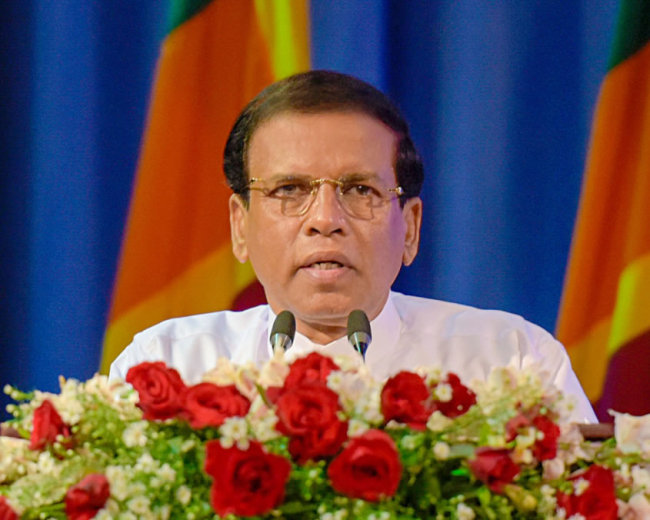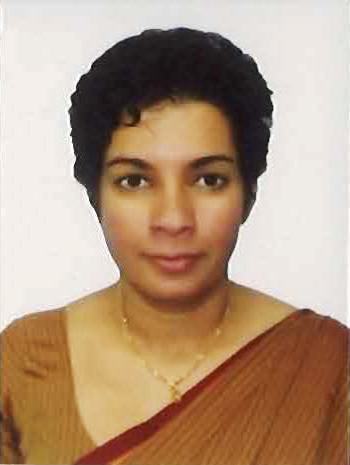The following article was contributed by the Embassy of Sri Lanka. – Ed.
Sri Lanka and the Republic of Korea enjoy longstanding friendly relations and historical bonds based on Buddhist cultural links spanning centuries. Since the establishment of diplomatic relations between Sri Lanka and Korea in 1977, there has been steady expansion of bilateral relations in the political, economic and cultural spheres. In terms of high-level visits, a presidential visit from Sri Lanka to Korea took place in April 2012, while the prime minister of Korea visited Sri Lanka in August 2013. These friendly ties are currently poised to be further elevated in the run-up to the two countries celebrating 40 years of diplomatic relations in 2017.
At present, following the inauguration of the new national unity government in Sri Lanka led by President Maithripala Sirisena and Prime Minister Ranil Wickremesinghe in 2015, there is greater focus on widening and deepening the existing friendly relations with Korea, with particular emphasis on the political and economic spheres. The two countries are discussing the possibility of the exchange of high-level visits in 2016 and 2017, including at the foreign ministerial level. The next round of political consultations between Sri Lanka and Korea are also scheduled to be held in Colombo this year.
Sri Lanka and the Republic of Korea enjoy longstanding friendly relations and historical bonds based on Buddhist cultural links spanning centuries. Since the establishment of diplomatic relations between Sri Lanka and Korea in 1977, there has been steady expansion of bilateral relations in the political, economic and cultural spheres. In terms of high-level visits, a presidential visit from Sri Lanka to Korea took place in April 2012, while the prime minister of Korea visited Sri Lanka in August 2013. These friendly ties are currently poised to be further elevated in the run-up to the two countries celebrating 40 years of diplomatic relations in 2017.
At present, following the inauguration of the new national unity government in Sri Lanka led by President Maithripala Sirisena and Prime Minister Ranil Wickremesinghe in 2015, there is greater focus on widening and deepening the existing friendly relations with Korea, with particular emphasis on the political and economic spheres. The two countries are discussing the possibility of the exchange of high-level visits in 2016 and 2017, including at the foreign ministerial level. The next round of political consultations between Sri Lanka and Korea are also scheduled to be held in Colombo this year.

Sri Lanka is a lower middle income country with a GDP per capita of $ 3,500, and has maintained a steady economic growth of over 6 percent in the last 10 years. Korea is emerging as a country of prime focus with which to further expand economic ties, given the government’s economic policy framework, which is focused on promoting investment and exports, integration in global value chains, and creating a knowledge economy. Sri Lanka has identified Korea from among a small basket of countries with which to explore the possibility of entering into a bilateral preferential trading arrangement (PTA) or a free trade agreement (FTA) in the future. In this regard, an initial joint study to examine the potential in trade and investment was launched in 2015 and is still in progress.
There has been a proposal to establish a Joint Working Group (JWG) between Sri Lanka and Korea to explore new avenues of enhancing bilateral economic cooperation. Under such a mechanism, some important areas could be discussed. This includes customs cooperation, technology transfer, addressing market barriers -- such as regulatory requirement on imports -- and steps towards enhancing trade, investment and tourism.
Korea remains as one of the most important sources of foreign direct investment (FDI) in Sri Lanka. Korean investment has resulted in over 70 companies being based in Sri Lanka. This has generated more than 4,000 job opportunities in the country.
There are many possible target sectors for Korean investment in Sri Lanka including electronics manufacturing, the development of industrial zones, tourism and leisure as well as knowledge-based industries.
Korean investors and joint ventures can make use of Sri Lanka’s ideal location along the Indian Ocean Sea to access and service markets in Southeast Asia, the Middle East and East Africa, through the Indian subcontinent. Sri Lanka’s FTAs with India and Pakistan can also be utilized.
The Sri Lankan government has also proposed to establish 11 business and technology development zones throughout the country, as well as an information and agricultural technology zone in Kandy this year. This will provide added impetus to attract Korean investment. The Sri Lankan government also hopes to introduce an investor-friendly Foreign Exchange Management Bill (FEMB), which would help attract foreign exchange flows.
There has been a modest but steady increase in bilateral trade between Sri Lanka and Korea which currently stands at approximately $487 million. The main export from Sri Lanka to Korea is apparel, accounting for 34 percent of Sri Lanka’s total export earnings from South Korea in 2014. Sri Lanka also exports Ceylon tea, rubber, spices, diamond and jewelry, among other things. Hence there exists tremendous potential to further access the Korean market.

Sri Lanka also has global monopoly in the supply of “True Cinnamon” commanding over 85 percent of the supply share in the world market. There also exists much potential to export sea foods and fisheries products, aquarium fish, fruits, vegetables and floriculture products to Korea.
Cooperation between the two countries has provided an effective framework to further enhance trade and investment ties. Memorandums of understanding exist between Sri Lanka’s Chamber of Commerce and the Korea Chamber of Commerce and Industry as well as the Busan Chamber of Commerce and Industry. Sri Lanka’s Board of Investment has a memorandum with the Small and Medium Business Corporation of Korea. Plans are also underway for an exchange of visits by investment trade delegations of both countries this year.
In addition, Sri Lanka and Korea are members of the Asia Pacific Trade Agreement, formerly known as the Bangkok Agreement, whose member countries cover a total population of about 2.5 billion, which provides a vast potential market to increase the level of intra-regional trade flows among participating states.
Sri Lanka has enormous potential to attract more tourists from Korea with the commencement of three direct flights per week via Korean Air between Seoul and Colombo since 2013. Korean tourist arrivals in Sri Lanka which stood at 4,318 in 2010, jumped to 14,373 in 2015. Sri Lanka is a unique tourist destination that offers a remarkable combination of experiences. Within a mere area of 65,610 kilometers lies 8 UNESCO World Heritage Sites, 1,330 kilometers of pristine coastline and 15 national parks with abundance of wildlife including herds of elephant. Not to mention nearly 500,000 acres of lush tea estates, 250 acres of botanical gardens, 350 waterfalls, 25,000 water bodies as well as ancient cities and cultural sites that are 2,500 years old.
Korean official development assistance to Sri Lanka is an important aspect of the bilateral relationship between the two countries. Its importance is demonstrated by the fact that Sri Lanka stands as the second highest recipient of such assistance in terms of cumulative disbursements -- $ 430.4 million -- and is placed at number five in terms of commitments out of 52 developing countries.
In Sri Lanka, Korea stands at the fourth place among donors. Korean official development assistance has contributed toward Sri Lanka’s development process through the Economic Development Cooperation Fund (EDCF), and grant assistance via the Korea International Cooperation Agency (KOICA).
KOICA has generated long-lasting goodwill between the two countries, in the priority sectors of development. KOICA volunteers continue to be effective cultural ambassadors of Korea. This bilateral partnership has been further strengthened by the recent visit of the President of the EXIM Bank of Korea Lee Duk-hoon to Sri Lanka this January.
A very important aspect of bilateral cooperation is labor relations, with approximately 30,000 Sri Lankan contractual workers engaged in the manufacturing, construction and fisheries sectors under the employment permit system in Korea. The Sri Lankan government pays high attention to the welfare of its worker community in Korea, through regular visits to employers, briefings and cultural events, among other things. The government of Sri Lanka is deeply appreciative of the opportunities granted to Sri Lankan workers by the Korean government whose contribution and remittances continue to make a significant impact on the economies of the two countries.
There are over a hundred Sri Lankan students studying in leading Korean universities. The scholarships offered to some of these students by the Korean government and some private foundations are greatly appreciated. The Sri Lankan workers and students in Korea speak fluent Korean and continue to be a valuable conduit of cultural relations between the two countries.
Korea’s Saemaul Undong (SMU) program or the ‘new village movement’, based on the principles of diligence, self-help and cooperation, resonates with Sri Lanka. The program is implemented in two model villages in Sri Lanka, with plans for further expansion to other regions. Action is underway by the Sri Lankan government to revitalize the rural economy. In this regard, Sri Lanka’s state minister of agriculture led a senior level technical delegation to participate in the Global Saemaul Leadership Forum in Daegu last November.
There remains great potential for the further enhancement of relations between the two countries in sectors such as science and technology, defense, and cultural relations. Action is underway to enter into and renew bilateral agreements to enhance cooperation in these sectors. Korean drama and k-pop are increasingly popular in Sri Lanka, and the showcasing of each other’s cultures can lead to the further elevation of this friendly and mutually beneficial partnership.







![[Graphic News] More Koreans say they plan long-distance trips this year](http://res.heraldm.com/phpwas/restmb_idxmake.php?idx=644&simg=/content/image/2024/04/17/20240417050828_0.gif&u=)
![[KH Explains] Hyundai's full hybrid edge to pay off amid slow transition to pure EVs](http://res.heraldm.com/phpwas/restmb_idxmake.php?idx=644&simg=/content/image/2024/04/18/20240418050645_0.jpg&u=20240419100350)





![[From the Scene] Monks, Buddhists hail return of remains of Buddhas](http://res.heraldm.com/phpwas/restmb_idxmake.php?idx=652&simg=/content/image/2024/04/19/20240419050617_0.jpg&u=20240419175937)

![[KH Explains] Hyundai's full hybrid edge to pay off amid slow transition to pure EVs](http://res.heraldm.com/phpwas/restmb_idxmake.php?idx=652&simg=/content/image/2024/04/18/20240418050645_0.jpg&u=20240419100350)

![[Today’s K-pop] Illit drops debut single remix](http://res.heraldm.com/phpwas/restmb_idxmake.php?idx=642&simg=/content/image/2024/04/19/20240419050612_0.jpg&u=)